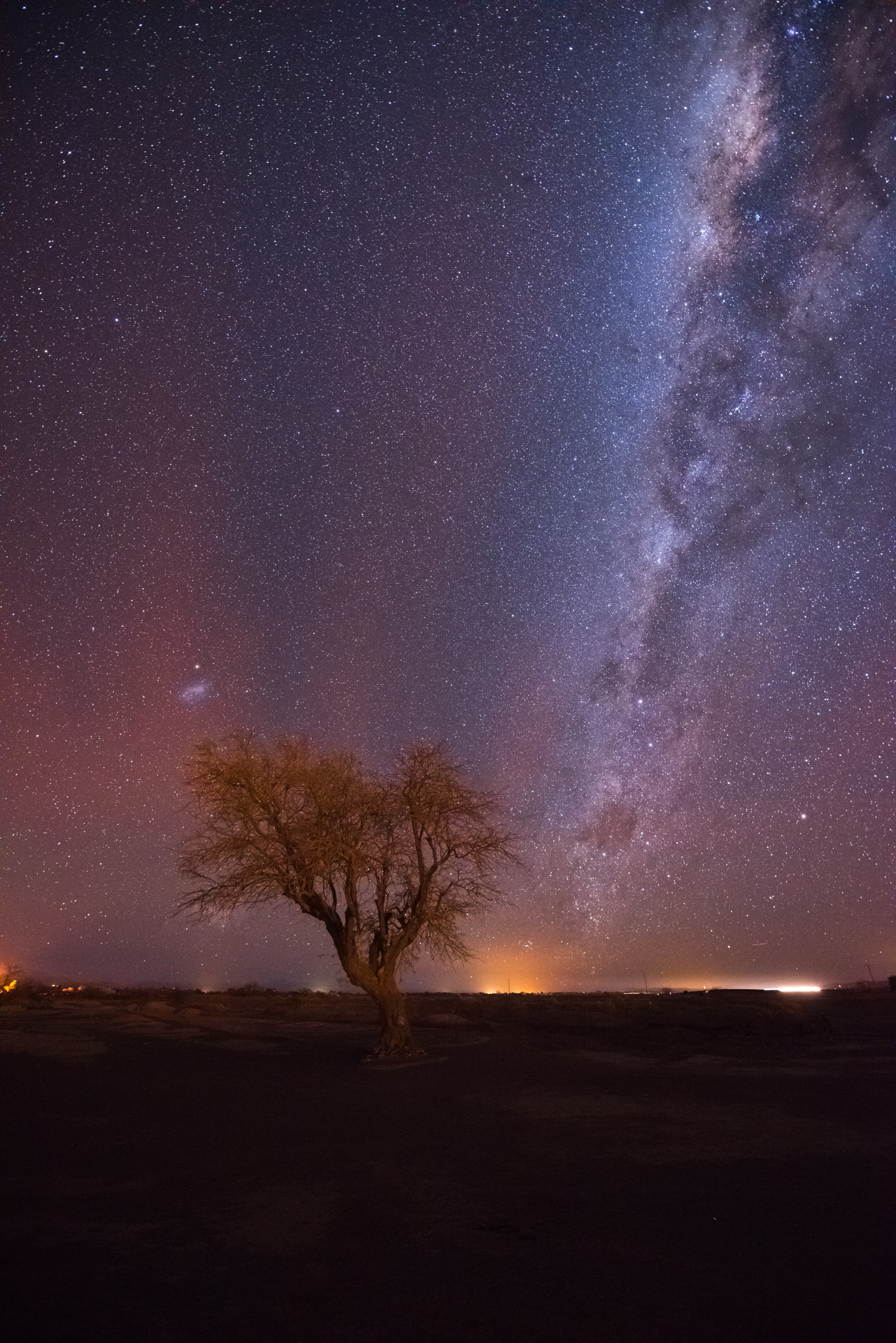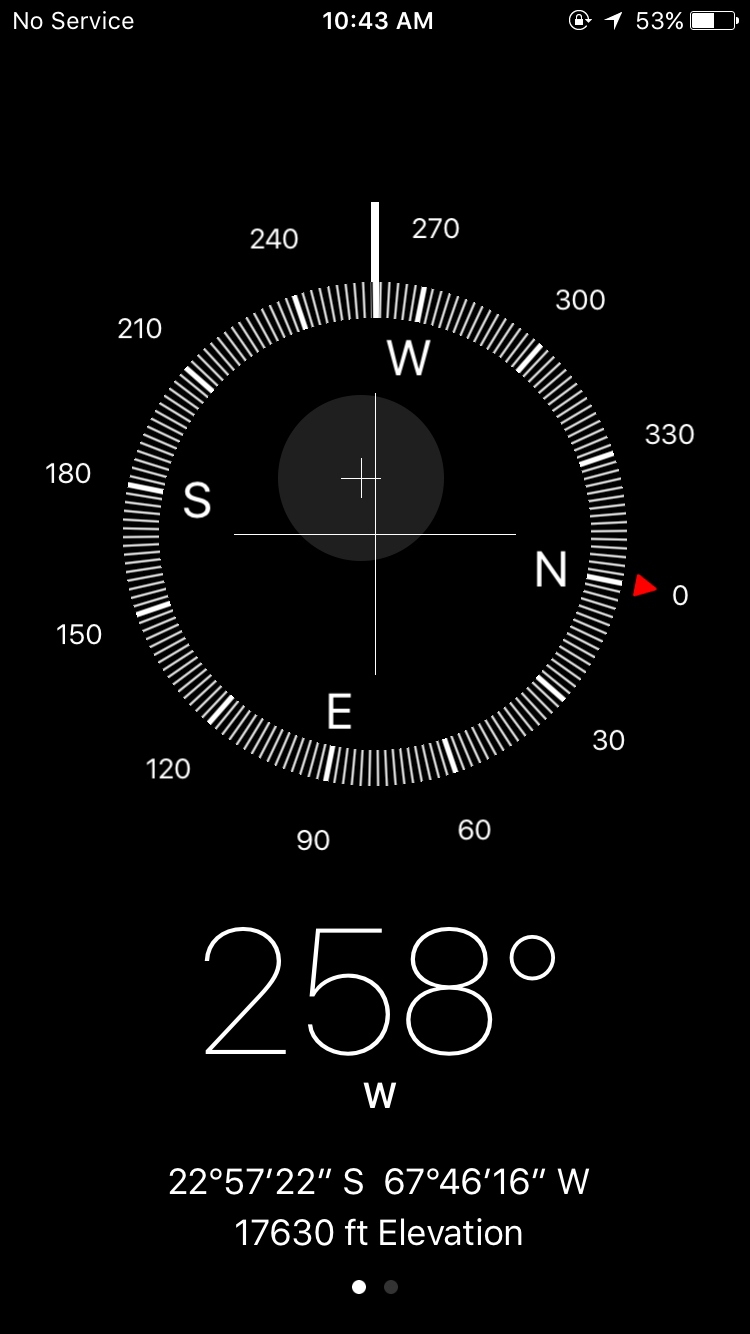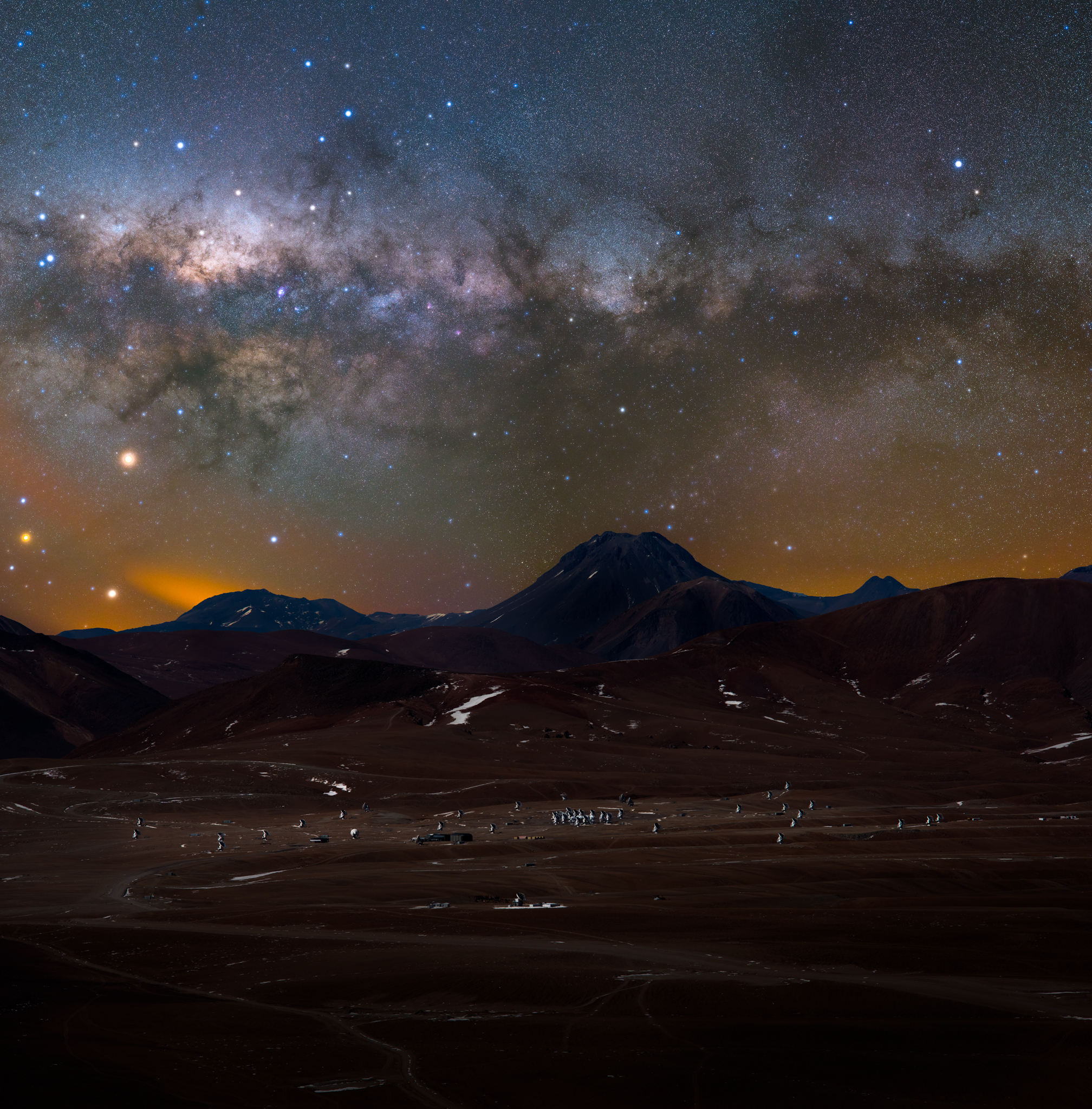
You can actually see both Magellanic Clouds from the Southern Hemisphere with our feeble human eyes! The clouds collectively occupy 13 degrees of the night sky; that's 26 full moons across‼️They're surreal, the coolest thing I've ever seen, and were always ominously hovering over me while star gazing in the Atacama Desert Fall of 2016.
Satellite Galaxies of our own Milky Way Galaxy, the Large Magellanic Cloud (LMC) and Small Magellanic Cloud (SMC) orbit our galaxy 175,000ish light years away. They are relatively young, gas rich galaxies in their early star forming stages. The unique stretched out appearances from our terrestrial angle are theorized to be the result of tidal interactions with our own much larger Milky Way Galaxy (estimated x10 the mass of the LMC) and also with each other. The SMC orbits the LMC while we think they both orbit us, but it is still unclear!

The Milky Way and Magellanic clouds rising over rock formations in the Atacama Desert, Chile.

The Magellanic Clouds and Milky Way rising over rock formations in the Atacama Desert, Chile.

After sacrificing my midnight snacks in order to appease some aggressive wild dogs (at night they are mean, but are good doggos during the day!) this is a quick image I took on my first night in Chile! With no rental car on my first night in the Atacama Desert, I was very eager to shoot and stargaze in the Southern Hemisphere so I walked a fair distance South of San Pedro de Atacama.

A straight out of camera single long exposure of the Large Magellanic Cloud through my 180mm f/2.8 Nikkor lens! Using a German Equatorial Mount I was able to track the sky and shoot about an hour of total exposure time on the LMC- hoping to combine all that data when I get time to produce a cleaner and more detailed image of the LMC! Polar Aligning my equatorial mount in the Southern Hemisphere was quite the challenge as Sigma Octantis, the "Southern Polaris", was a dim looking star through my polar scope and surrounded by brighter, more prominent stars in it's constellation Octans!

Acclimating to the high altitudes in Chile was quite intense! When you mix sleep deprivation and altitudes like this together, you begin to lose your soundness of mind. From not taking the lens cap off to polar aligning my Equatorial Mount on the wrong star, the conditions in Chile at night were extremely challenging!

The Milky Way core over the ALMA telescope array! The ALMA telescope array consists of 61 radio telescopes operating in tandem as one massive radio telescope! The array sits at 16,000 feet above sea level surrounded by volcanic mountains in the post apocalyptic looking Atacama Desert! I climbed a nearby mountain one night to 18,000 feet and endured a cold -34 degree night to get this image.

A portrait of the Milky Way and Magellanic Clouds rising over one of radio telescopes at the ALMA compound 16,000 feet above sea level in the Atacama Desert.









